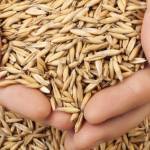Zearalenone Poisoning in Horses

Mycotoxins are produced by more than a hundred types of fungi. Some fungi produce a single mycotoxin, while others generate multiple toxins.
Animal poisonings by mycotoxins, called mycotoxicosis, have been recorded for centuries. In the mid 1930s, more than 5,000 horses died from equine leukoencephalomalacia in the Midwest after consuming corn infected with fumonisins.
Another mycotoxin of interest is zearalenone, which is often found on barley, oats, wheat, rice, sorghum, and sometimes on forages. Though the occurrence of zearalenone in grains and feed is more frequent in temperate climates, it is a worldwide problem.
Zearalenone is produced by Fusarium fungi. Key to its proliferation is moisture, and the mycotoxin seems to reproduce rapidly during wet conditions, especially in late summer and early autumn. Grain stored in high-moisture environments seems particularly susceptible to zearalenone assault.
Zearalenone is quickly absorbed from the gastrointestinal tract after ingestion. Sensitivity to zearalenone seems somewhat species-specific, and reports of toxicity have been noted in horses fed corn screenings for 30 days. Mares showed signs of edematous vulvas, prolapsed vaginas, oversized uteri, and internal hemorrhage. Severe flaccidity of the genitalia of male horses was also described. Sick horses experienced respiratory failure, blindness, and eventually death.
No specific remedy is available for zearalenone toxicity, and symptomatic treatment is usually warranted. No zearalenone binder has been proven effective, and none is currently approved by the Food and Drug Administration (FDA).
What horses are at risk?
Horse owners that purchase high-quality feed from reputable feed manufacturers have little to worry about in the way of zearalenone toxicity, as these mills buy premium grains for use in textured and pelleted horse feeds.
Horse owners that choose to feed their horses grain harvested directly from the field or grain stored improperly will place their horses at a higher risk of zearalenone toxicity.








